#American Scam
Text
Always remember that a major reason reason health scams and sketchy alternative medicines are flourishing the way they are right now is because the actual, real health care system is currently a raging Dumpster fire due to capitalism and conservative policies.
#health#health care#medicine#scams#alternative medicine#alternative health care#politics#us politics#american politics
147 notes
·
View notes
Text
I haven’t Leo posted in so many…so long…..so much……
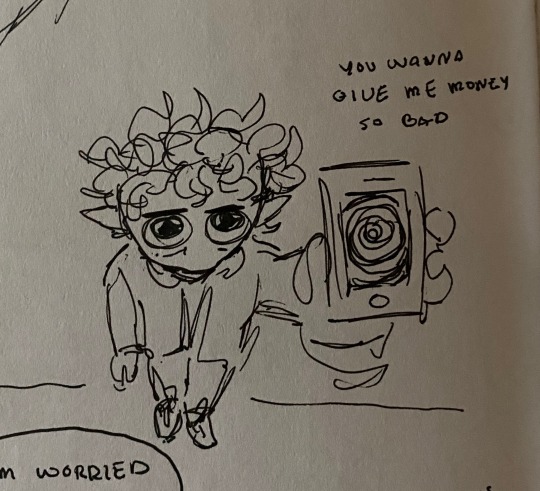
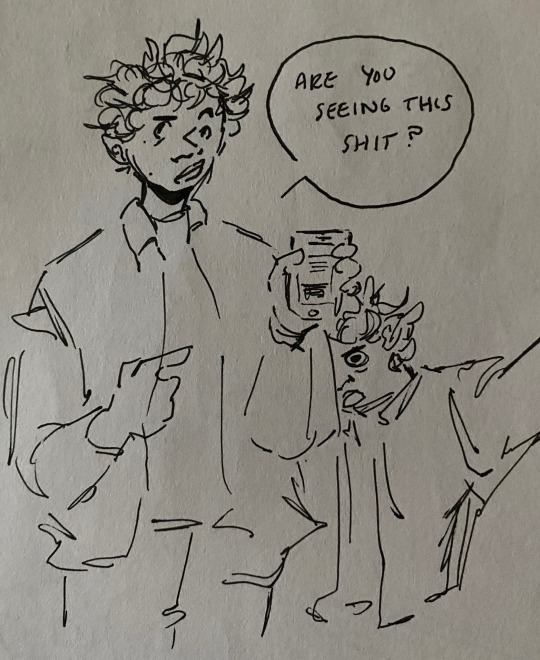
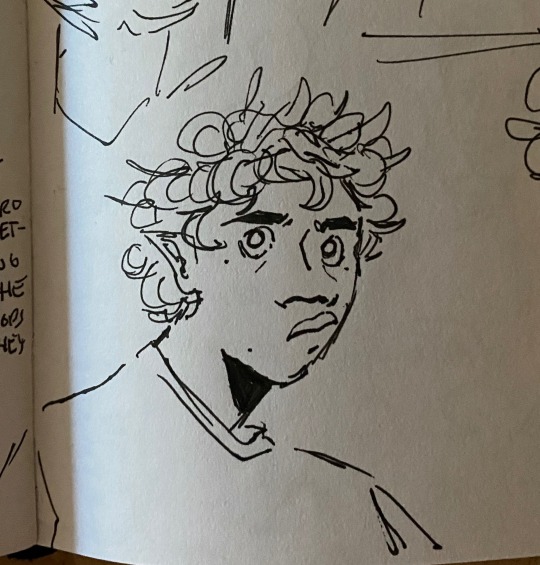
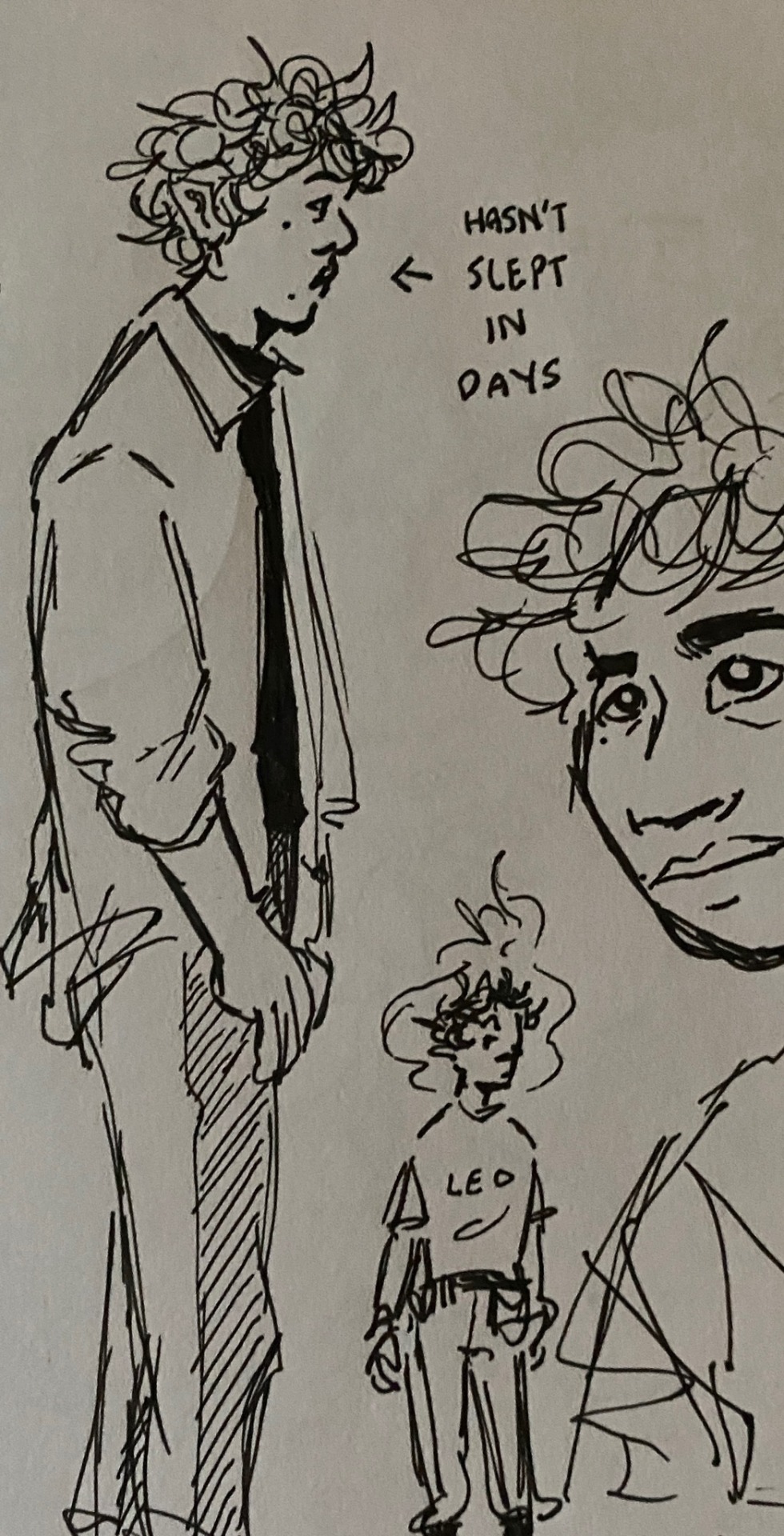


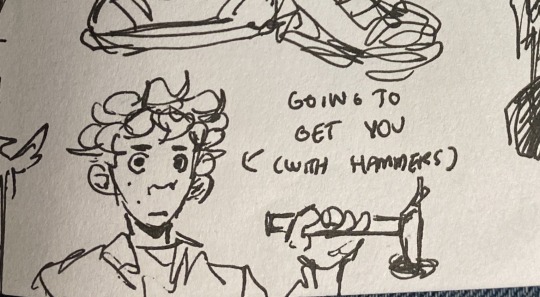

#percy jackson#percy jackon and the olympians#heroes of olympus#leo valdez#memes#my crappy art#don’t make fun of my handwriting#art#leo valdez art#i love him he’s so silly#gonna get you with hammers#I think he deserves to run a crypto like scam for Hephaestus tv#he goes ‘dad think about the privacy violations we’re on American soil’#and he goes ‘they just need to pay me through venmo every hour of screen time I have’#he’s RICH in crypto
79 notes
·
View notes
Text
CC: (a video by the user nativeamericancultures plays with the audio & text that reads "5 fascinating facts about Native Americans you probably didn't know" before being cutoff by a stitched video added by the user redthunderbirdplays.)
"Hey, um, do me a favor and report this account (nativeamericancultures), because not only is it just full of stolen content from Native tiktokers, and just reposted (videos), but this whole account is just posting ai photos of Native Americans. Which, 1. that's shitty, why would you do that? And 2. real photos and art of us exist, and 3. They give a paypal to supposedly, quote unquote, "support Native American culture". "Culture" they say. And their name is of Vietnamese origin, that they give in this paypal (paypal.me/nativeamericancultur) so I highly doubt that they are Native American themselves. And yeah there's Vietnamese Natives out there, but I don't think any actual Native American would say "Native American CULTURE". That's some bullshit that people who don't know about Native Americans say.
From my gaming tiktok: I'm asking people to report both the tiktok nativeamericancultures & the associated paypal nativeamericancultur due to this person very unlikely being Native American, yet they are essentially asking people for money for posting stolen content that they downloaded & then reposted from multiple Native American tiktokers. There's multiple similar accounts that do this & post stolen content while asking for money, and most of them are not Native American.
42 notes
·
View notes
Text

#rich older man#rich girl#it girl#money#scamming old men#dollette#this is what makes us girls#ultraviolence#american vintage#coquette dream#gloomy coquette#coquette angel#coquette aesthetic#girl things#this is a girlblog#girlblogging
23 notes
·
View notes
Text
I will forever have "was is des? Das einzige was mir zu mir gehört. Ich verflüche den Tag an den Vati mich an den Schlitten gesetzt hat" in my mind. It's just on replay
#the way it's really good german in some ways. especially in comparison to other american media#but also “verflüche”#i just love it so much#that whole scene#the way she was apparently just watching her wikipedia (or whatever it was)#and when a different face suddenly shows up her reaction isn't that its a malfunction or a scam#but that she has now lost everything that mattered and curses the day her dad sat her on a sled#icon#leverage
13 notes
·
View notes
Text
Fake Indian art still a major problem despite federal responsibilities
Criminal pleas surface amid vague ‘Indigenous’ claims
Tuesday, March 14, 2023
By Acee Agoyo, Indianz.Com
Efforts to strengthen the Indian Arts and Crafts Act are gaining new steam as government authorities try to enforce a law aimed at addressing fraud and exploitation of Native cultures and ways of life. On Monday, the Democratic chairman of the Senate Committee on Indian Affairs unveiled a discussion draft bill called the Amendments to Respect Traditional Indigenous Skill and Talent Act of 2023. Also known as the ARTIST Act [PDF], the proposed legislation seeks to protect the arts, crafts, goods and other creative works that American Indian, Alaska Native and Native Hawaiian people have produced since time immemorial.
“The ARTIST Act would update the Indian Arts and Crafts Act to support creative economies and strengthen enforcement of current law and protections against counterfeit competition for Native artists and their works,” the committee said in a news release on behalf of Sen. Brian Schatz (D-Hawaii), the chair of the legislative panel. ���This discussion draft reflects direct stakeholder input as well as years of committee oversight and broad commitment to the protection of Native cultural patrimony and revitalization of Indigenous languages,” the release continued.
As enacted in 1990, the Indian Arts and Crafts Act makes it a crime to market, sell or promote an item as “Indian” unless it was created by a citizen of a state or federally recognized tribe or by an artisan certified by a tribe. The law was written to prevent the historical and ongoing misrepresentation of Native arts by non-Native entities. Yet Native artists and their advocates have long complained about the lack of enforcement as fakes and frauds have continued to flood the market and undermine an important source of income in Native communities across the United States.
It’s an issue that Secretary Deb Haaland, who is the first Native person to lead the Department of the Interior, has recognized as a major problem. “Native art is a critical part in telling the story of this country and can only be told by Native artists,” Haaland said in a video message after making history as the first Native person in a presidential cabinet. “Buying authentic pottery, jewelry, mixed-media creations, paintings and other art from Native American artists helps support tribal economies.” “Unfortunately forgery and copies hinder the positive economic opportunities available to Native artists and their families,” said Haaland, who is a citizen of the Pueblo of Laguna.
youtube
The law was updated in 2000 and in 2010 to strengthen enforcement. But as fraudulent works continue to be sold in some of the largest art markets in the U.S., the ARTIST Act builds on prior efforts by broadly expanding the ways in which federal officers can investigate suspected violations. Federal officers, for instance, would be authorized to make arrests, engage in searches and even conduct seizures for suspected violations of the Indian Arts and Crafts Act.
They would also be able to inspect shipments coming into the U.S. to ensure compliance with the law, according to provisions of the draft. And for the first time, Native Hawaiians would gain protections for their creative works. The ARTIST Act modifies existing definitions in federal law to ensure that the original inhabitants of Hawaii aren’t left out of enforcement efforts that are available to American Indian and Alaska Native artisans.
To help pay for these enforcement measures, the ARTIST Act authorizes ways in which people suspected of violating the law can have their property forfeited and be required to shoulder the costs of investigations through fines and penalties. A new Indian Arts and Crafts Forfeiture Fund would be established to assist the work of the Department of the Interior.
The draft discussion bill also requires visible and permanent labeling of items that come into the U.S. from Canada or Mexico. Anything that could “possibly be mistaken for, arts and crafts made by Native Americans” must be “indelibly marked with the country of origin,” according to provisions of the the ARTIST Act.
Finally, the ARTIST Act would require trainings of federal law enforcement officers, not only on the Indian Arts and Crafts Act but on the recently-enacted Safeguard Tribal Objects of Patrimony Act, also known as the STOP Act. The latter law makes it a crime to export tribal cultural property, another issue that has threatened Native cultures and ways of life. “For too long, the export and sale of sacred and culturally significant items from Native peoples in Hawaiʻi, Alaska, and across Indian Country has deprived these communities of their own history and heritage,” Schatz said after the measure was passed and signed into law during the prior session of Congress. “Our bill will help stop the black market trafficking of these items and bring them home.”
Just this month alone, federal authorities announced the resolution of three cases in which the Indian Arts and Crafts Act was violated. In all three instances, non-Natives created and sold fraudulent art by misrepresenting, falsifying and lying about their non-existent tribal backgrounds. In Washington, 52-year-old Lewis Anthony Rath and 67-year-old Jerry Chris Van Dyke, also known as Jerry Witten, pleaded guilty on March 1 to breaking the law.
Both men admitted that they sold fake “Indian” goods in the historic Pike Place Market in Seattle, one of the most heavily trafficked tourist areas in the city. “When non-Native artists falsely claim Indian heritage, they can take sales away from true Indian artists working to support themselves with skills and techniques handed down for generations,” Nick Brown, the U.S. Attorney for the Western District of Washington, said in a news release. “Stores and galleries need to partner with artists to ensure those artisans and craftsmen advertised as Indian Artists truly have tribal status,” Brown added, offering advice to businesses to ensure they comply with the law.
Rath falsely claimed to belong to the San Carlos Apache Tribe — while producing items that mimicked the Pacific Northwest tribal cultures that are hundreds of miles from his supposed Native homeland in Arizona. According to federal authorities, the goods were sold at the Raven’s Nest Treasure and the Ye Olde Curiosity Shop, both of which represented to customers that Rath was Native. And when agents from the U.S. Fish and Wildlife Service, which is part of the Department of the Interior, searched Rath’s home and studio, they found feathers from protected birds — including ones from golden eagles. He pleaded guilty to unlawful possession of these items in addition to violating the Indian Arts and Crafts Act.
Meanwhile, Van Dyke falsely claimed to be from the Nez Perce Tribe and was selling goods that he claimed were of Alaska Native origin — again far away from his supposed tribal background in Idaho. According to federal authorities, he produced the items using materials that were supplied to him by the non-Native owner of a gallery in Pike Place.
“Van Dyke had worked with the gallery for more than ten years, with the gallery owner providing him with woolly mammoth ivory, antlers, animal bones and fossilized walrus ivory to make the pendants that it sold,” the U.S. Attorney’s Office for the Western District of Washington said in the March 1 news release. A day later in Texas, the U.S. Attorney for the Western District announced the sentencing of Kevin Charles Kowalis, 60, for violating the law. According to federal authorities, he falsely marketed and sold jewelry online that he claimed were of “Zuni” and “Navajo” origin even though he does not belong to either tribal nation.
“Fraud can come in many forms but always carries the intent to deceive a victim,” U.S. Attorney Jaime Esparza of the Western District of Texas said in a news release. “Offenders like this defendant victimize both our cherished Native American community and consumers who believe they’re collecting authentic pieces of Native American culture. We will not stand idle while someone takes advantage of our citizens and our federal resources.” Kowalis will serve five years probation for his crime and was ordered to forfeit his inventory, pay a special assessment and pay restitution to a victimized artist from the Pueblo of Zuni.
The total amount appears to be relatively low — less than $1,500, according to court records. No fines were ordered due to his “inability to pay,” the criminal judgment reads. “This sentencing is important in the fight to end this type of fraud,” said Assistant Director Edward J. Grace of the U.S Fish and Wildlife Service’s Office of Law Enforcement. “Our dedicated team of special agents works on behalf of the Department of the Interior and the Indian Arts and Crafts Board to protect American Indian and Alaska Native artists and the consumers who purchase authentic Native American art and craftwork.”
Over in Washington, Rath and Van Dyke are due to be sentenced on May 17. As part of a plea agreement, federal prosecutors said they won’t seek prison time for Van Dyke. Rath did not obtain any promises regarding sentencing in his plea agreement. A federal judge, though, will make the final determination on punishments for both individuals.
“The Indian Arts and Crafts Board (IACB) is very pleased that Jerry Chris Van Dyke and Anthony Rath have been brought to justice for their roles in selling fake Indian artwork in violation of the Indian Arts and Crafts Act,” said Director Meridith Stanton, the leader of the IACB, which is part of the Department of the Interior. “Cases like these are critical to preserving the integrity and viability of authentic Native American art and craftwork in general, as well as preserving the rich cultural heritage of the Nez Perce Tribe and the San Carlos Apache Tribe and the economic livelihoods of their artists and craftspeople,” said Stanton.
The IACB helps look into potential violations of the Indian Arts and Crafts Act, offering examples of possible wrongdoing. But the board’s website notes that items that are marketed or portrayed as “Native American style” or “Native American inspired” can be sold without violating the law — so long as there is “qualified labeling” available to the consumer.
The draft discussion of the ARTIST Act maintains the legality of these categories of “Native American-style jewelry” and “Native American-style arts and crafts” but requires that such items be “indelibly marked” or labeled in a “permanent” fashion, to ensure the consumer is aware that they are not produced by an American Indian, Alaska Native or Native Hawaiian artist.
And while the title of the ARTIST Act contains the word “Indigenous,” the proposed bill does not contain any definitions of a term that has become increasingly used by people who are creating, marketing and selling art that they claim is Native in origin.
An example just emerged in New York, where a self-described activist opened an exhibit in February that appropriates numerous elements of Native culture even after admitting to Indianz.Com that they do not belong to any tribal community. The exhibition, located at a small gallery in the Upper East Side of New York City, notably incorporates the red imagery that Native women developed and brought to prominence to raise awareness to their missing and murdered sisters and relatives. It also includes a visual representation of a Native quilted blanket — albeit with the word “PRETENDIAN” stitched into it.
The Soul of Nations Foundation has prominently marketed the installation as “Indigenous” in origin, a designation that has prompted some Native people to consider reporting it to the Indian Arts and Crafts Board for possible violations of the Indian Artist and Crafts Act. In fact, the non-profit’s executive director and founding member, Ernest Hill, contacted Indianz.Com numerous times in advance of the opening on February 24, soliciting news coverage for an individual who removed all references to their supposed tribal affiliation over a year ago.
Yet Hill, whose parents served as religious missionaries to the Navajo Nation and to other reservations, has since refused to answer questions about the exhibition — including inquiries about the artist’s supposed tribal background.
Materials that Soul of Nations produced for the installation claim it is directed to “Indian Country” but the organization has repeatedly refused to respond to inquiries about the use of the designation in connection with someone who admitted they lack ties to any tribal community. Hill and Soul of Nations also have refused to clarify the source of funding for the project.
In press materials, they proudly assert that the installation has received “support” from the Department of State. On social media, Hill and Soul of Nations gave a different story. In response to a prominent Native environmental leader who has repeatedly attempted to hold the self-described activist accountable for the false claims of tribal belonging, they claimed that “no outside funding was provided for this exhibition.”
When asked to explain the discrepancy between the press materials and the social media post regarding their claim of receiving federal support, Hill and the Soul of Nations refused to respond. The organization started blocking Native users on social media and began restricting interactions on one of its accounts after questions were raised about the installation. The Soul of Nations website, incidentally, includes a prominent reference to the “Senate Committee on Indian Affairs” on a page that has been used to solicit monetary donations. The Department of State is also listed in the same section of the site.
Since the opening of the installation last month, the self-described “Indigenous” individual has posted on social media about being on “Day 371” of a “cancel” and a ‘call out” that has purportedly kept them “jobless.” The number of days is counted from the February 25, 2022, story on Indianz.Com that reported on their their non-existent tribal affiliations. The next post on the private account was about the installation, which opened to the public a year following publication of the story. The user has since deleted hundreds of posts about their supposed tribal background from the account, whose name is a variation of an anti-LGBTQ slur.
The Senate Committee on Indian Affairs is accepting comments about the Amendments to Respect Traditional Indigenous Skill and Talent (ARTIST) Act of 2023 until April 14. Comments can be sent to [email protected].
#art#native american#indigenous#indigenous artists#native news#scams#frauds#us politics#us government#indian law#native art#indigenous art#native artists#current events#Youtube
69 notes
·
View notes
Text

capitalism is a disease
#capitalism is a scam#capitalism is evil#capitalism is hell#capitalism is a disease#capitalism is the worst#capitalism#jail#prison#prison phone companies#prison phone#prison calls#prison cell#prison conditions#prison cube#prisoner#usa news#suits usa#usa politics#usa#american indian#american#america#unitedsnakes#abolish capitalism#abolish the monarchy#abolish the police#abolish prisons#abolish israel#ausgov#politas
8 notes
·
View notes
Text

Frat boy denki, I feel like this dork *would* unironically lip bite at some girl to try and look hot but end up looking like a goofball
#my hero academia#mha fanart#mha#mha denki#denki kaminari#denki#denki headcanons#fanart#traditional art#caliart#If mans lived in american he WOULD join a fraternity in college#and just do#the most stupid shit#it would be great#I need mha frat boy au now full of stupid college stories of scamming charity’s to stealing other schools mascots
7 notes
·
View notes
Text

Monday, April 8,2024
IMPORTANT
PLEASE SHARE FROM THE FAMILY OF
COLE BRINGS PLENTY
!! Joseph 'Joe" Brings Plenty, Sr. respectfully requests that anyone who has created merchandise featuring his son Cole's name, face, image, or likeness and is selling it please stop. No one has spoken to Joe, and he is unaware of anyone speaking to any family member about it. Even if someone had, Joe would have kindly asked them not to, as his son's passing is not and should not be an opportunity to make money.
!! Mo Brings Plenty has never contacted anyone through direct messages on any
social media platform. We want to remind everyone that the people posing as Mo will tell you whatever they think you want to hear to gain your trust and/or sympathy, but it's all a scam. If you trust anything, trust this Mo does not, has not, and will never use direct messages to contact people. If you think you have been speaking to Mo, you haven't; the frauds are using 'sympathy; to ask for money.
!! We know some will not honor the family's wishes that they not sell merchandise.
Like we know, despite our repeated statements that Mo does not engage in direct messaging, some still mistakenly believe otherwise.
All we can do is urge everyone not to purchase or believe. Thank you.
COMMENTS OR QUESTIONS, PLEASE CONTACT
MlCHELLE SHINING ELK 661-200-4822 TEXT IS BEST
#Cole Brings Plenty#MO Brings Plenty#Scams#Important#Native Americans#Indigenous#Native actors#Rest in peace Cole#Justice for Cole
6 notes
·
View notes
Text
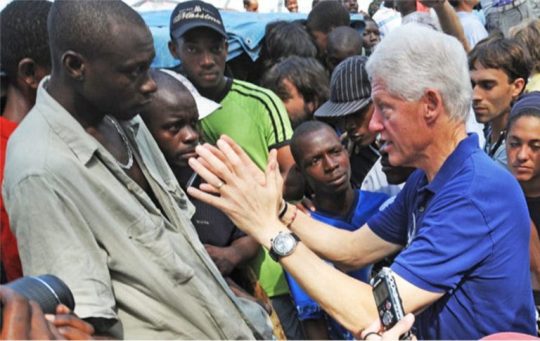
The Clinton Foundation faces accusations it mishandled funds intended for Haiti earthquake relief, as the Justice Department investigates whether the Clintons gave or promised policy-related favors to foundation donors. (Photo: Current Affairs)
As a result of the recent comments by President Donald Trump — in which he called Haiti and African nations “shithole countries” and said, “Why do we need more Haitians? Take them out” — the issue of the Haiti’s plight has resurfaced, but within a different context. The Clinton Foundation has been accused of corruption and misuse of funds, including allegations the foundation committed fraud in Haiti.
As The Hill reported this month, the Justice Department is conducting an investigation in Little Rock, Ark., into whether the Clinton Foundation engaged in “pay to play” politics while Hillary Clinton served as Secretary of State under Obama. Specifically, the FBI is investigating whether the Clintons promised or fulfilled any policy-related favors to foundation donors, or if donors gave to the charity for the purposes of receiving access to Clinton or particular outcomes from the government. Trump, whose campaign and supporters adopted the phrase “Lock her up!” has called for investigations into his former political rival. When he was on the campaign trail supporting Trump, now-Attorney General Jeff Sessions accused Hillary Clinton of using her position leading the Obama State Department to extort foreign governments to benefit the Clinton Foundation.
A November 2, 2016, report from the BBC immediately before the election noted that Trump has criticized the Clintons’ work in Haiti. “I was at a Little Haiti the other day in Florida. And I want to tell you, they hate the Clintons because what’s happened in Haiti with the Clinton Foundation is a disgrace,” Trump said in the final presidential debate with Clinton. In the 1980s, Haiti accused former dictator Jean-Claude Duvalier of laundering money he stole from Haiti by purchasing an apartment in Trump Tower. Trump sold the Trump Tower apartment to Duvalier through a Panamanian shell corporation in 1983, a practice which hides the finances and identities of buyers.
The January 2010 earthquake in Haiti killed an estimated 220,000 people. International donors pledged an estimated $13.3 billion in aid to the Caribbean nation in the wake of the devastation. Along with Haitian Prime Minister Jean-Max Bellerive, former President Bill Clinton, who was UN Special Envoy to Haiti, became co-chairman of the Interim Haiti Recovery Commission (IHRC). From January 2010 through June 2012, $9.04 billion in international funding was raised — $3.04 billion from individuals and companies, and $6.04 billion from bilateral and multilateral donors. Of the $6.04 billion, 9.6 percent, or $580 million went to the Haitian government, while 0.6 percent or $36.2 million went to local Haitian organizations. The lion’s share, 89.8 percent of $5.4 billion went to non-Haitian organizations, including private contractors, international NGOs, and military and civilian agencies of donor countries, including the Pentagon, which charged the State Department hundreds of millions of dollars.
Critics have pointed at the Clinton Foundation, alleging the charity had control over the billions of dollars in aid to Haiti. During the 2016 presidential campaign, the Clintons’ involvement in Haiti translated into mixed feelings in the Haitian-American community about Hillary Clinton, ranging from low enthusiasm to disappointment and anger. As secretary of state, Clinton supported the presidency of Michel Martelly, intruding into Haitian electoral politics by flying to Haiti in 2011 to pressure President René Préval to allow Martelly to participate in a two-person runoff. Martelly won. As president, Martelly selected Special Envoy Bill Clinton’s chief of staff as prime minister, and gave important positions to people with criminal backgrounds, and was known for corruption and violent government repression, and attempting to install his successor. Mrs. Clinton’s brother, Tony Rodham, became a member of an advisory board of a mining company that owns a gold mine in Haiti and was introduced to the company through the Clinton Global Initiative arm of the Clinton Foundation. All of this fueled speculation that the United States and the Clintons were installing a puppet government and engaging in profiteering and drew the ire of Haitians and Haitian-Americans.
According to right-wing commentator and financial analyst Charles Ortel in an interview with journalist H.A. Goodman in Huffington Post, the hurricane created an opportunity for the Clinton Foundation and its allies to raise considerable resources, but with little accounting of these funds. “The Clintons seem to be ‘merchants around misery’, operating as a kind of ‘Robin Hood in Reverse’ — there are many disasters that they seem to have exploited,” Ortel said. “In brief, the Clinton Foundation solicited massive sums to ‘fight HIV/AIDS’ but did not check carefully enough to ensure that these drugs were supplied in intact form, and neither adulterated nor watered-down,” he added. The Nation also reported the “hurricane-proof” classroom trailers the foundation used in Haiti were structurally unsafe and laced with formaldehyde, a product of the same company sued by Hurricane Katrina victims.
Reflecting the anger against the Clintons among the Haitian-American community, on January 12, the Committee to Mobilize Against Dictatorship in Haiti (Komokoda) held a protest outside the Clinton Foundation headquarters in New York City. Speaking at the protest was Dahoud Andre, president of Komokoda and a radio host.
youtube
The organization says it continues to protest the Clintons because “there is still no justice despite the billions they have stolen through Bill Clinton’s position (as) UN Special Envoy to Haiti in March of 2009 in the aftermath of 4 major storms which devastated parts of our country; through the post 2010 earthquake Interim Haiti Reconstruction Commission; through foreign governments and corporations funneling hundreds of millions (most of them undisclosed) for favors from then US Secretary of State Hillary Clinton to the Clinton Foundation under the guise of helping Haiti; and through the Clinton-Bush Fund,” Komokoda said in a press statement. In light of the announcement by the Justice Department, the group says it remains vigilant and demands a serious investigation, and that any crimes are fully prosecuted and punished. “It is itself a crime that this Justice Department prosecuted and got a conviction against Corrine Brown, Florida’s first African-American Congressperson since Reconstruction for corruption related to $800,000 from her ‘One Door for Education’ charity and yet it took them this long to even start an investigation of the Clintons,” the statement added.
Komokoda’s claims of the Justice Department’s tardiness in looking at the Clintons notwithstanding, Bill and Hillary Clinton have together and separately weathered multiple federal and congressional investigations ranging from Whitewater in the 1990s through the probe into Hillary Clinton’s use of private email servers as secretary of state that wrapped up in 2016 during her campaign for president. The latest probe, a renewal of an investigation that began under the Obama administration, has found the Clintons prepared to respond.
The Clinton Foundation told Atlanta Black Star that it raised $30 million for the Haiti earthquake relief efforts, and did not have control over the bulk of the $9 billion raised for Haiti. “Overall, we’d point out that many of the claims about the Clinton Foundation and Haiti have been found to be flat-out false,” the Clinton Foundation press office said in a statement. “All funding collected by the Clinton Foundation for Haiti was distributed in full to aid groups on the ground, and we have documented which groups received this funding and what it was for. The Clinton Foundation did not take a penny in overhead for our work.”
The foundation also pointed to various refuted claims, including Trump’s assertion that Secretary of State Hillary Clinton did favors for Clinton Foundation donors, and that “Hillary Clinton set aside environmental and labor rules to help a South Korean company with a record of violating workers’ rights set up what amounts to a sweatshop in Haiti.” Politifact depicted his claim as “mostly false.” BBC reported that the foundation and the State Department arranged with the Haitian government for a $300 million, 600-acre factory to produce clothing for retail giants such as Target, Walmart and Old Navy. Several hundred farmers were evicted to clear the land, and the South Korean textile company Sae-A Trading Co. later donated between $50,000 and $100,000 to the foundation. While Clinton said the facility would produce 100,000 jobs, only 8,000 were created.
The Washington Post rebutted another allegation, that Hillary Clinton and the Clinton Foundation raised hundreds of millions of dollars for a hospital that was never built. Further, Jonathan Katz, who was the Associated Press correspondent in Port-au-Prince during the earthquake, wrote a piece in Slate stating that “neither I nor anyone else has found the coveted evidence of either Clinton making off with vast sums of money from Haiti or the relief effort.” Katz offers the historical backdrop of U.S. intervention in Haiti and elsewhere, and the failed earthquake recovery in Haiti, which led to spiraling inflation and spikes in violence. “No two individuals, including Haiti’s own leaders, enjoyed more power and influence than the Clintons in the morass of the failed reconstruction following the deadly Jan. 12, 2010, earthquake, when a troubled country managed to go from catastrophe to worse,” he said, arguing that there is no proof the goal was to financially benefit the Clintons.
Katz did find fault with Hillary Clinton for pursuing “badly flawed” vision of prosperity for Haiti focused on “foreign investment in tourism, construction, and low-wage garment factories” which would mean low wages and little money flowing in the local economy, rather than the stated goal of reliving Haitians from poverty and preventing future refugee crises. That model, he argued, has been pursued by the U.S. since the 1960s. “The system isn’t designed for them; it’s for us. The low wages that the U.S. embassy helped suppress are the reason we can enjoy a steady stream of $9 Mossimo camisoles and $12.99 six-packs of Hanes T-shirts. Even U.S. military uniform parts get made in Haitian sweatshops,” Katz added.
Snopes has debunked two conspiracy theories that have circulated in conservative circles and among misinformation news sites, specifically that former Haitian official Klaus Oberwein died of a suspicious suicide days before he was scheduled to testify against the Clinton Foundation or Hillary Clinton, and that a “U.S. surgeon who exposed ‘Clinton Foundation corruption in Haiti’ was found dead in his home under suspicious circumstances.” And Bill Clinton denied any claims that the Clinton Foundation used money designated for Haiti for personal means.
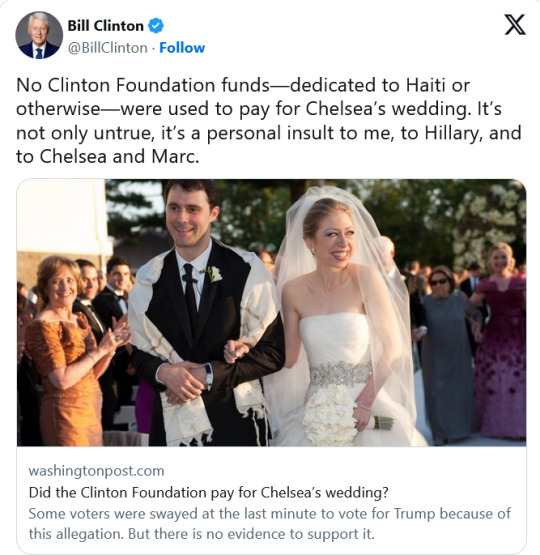
While there is disagreement over the role of the Clinton Foundation in Haiti, it is certain that billions of dollars were raised for Haiti.
The American Red Cross raised $500 million for Haiti, spent one-quarter of the funds on internal expenses and only built six houses. The people of Haiti, the first Black republic, have suffered and continue to suffer. Everyone has failed Haiti.
#What Really Happened with the Clinton Foundation and Haiti?#Haiti#clinton foundation and haiti#clintons#clinton foundation#clinton used haiti to fundraise#american red cross scam in haiti#Youtube
6 notes
·
View notes
Text
If you've ever been wine tasting or to a fancy restaurant where you ordered wine, and they uncork it for you and show you the cork and watch while you swirl and taste your wine and then kind of say, "Mm it's great thank you" to make the waiter/sommelier go away, then you know exactly how I respond when my car is at a garage or the oil change place and they bring out the filter or dipstick or whatever to show me and I'm just like, "hmm great thank you--oh that's a bad filter? right bad got it. excellent work thanks."
#i can actually fake wine babble but i hate it#and i will rant about american wines being scams all day so it's best to just politely nod and smile#i know the car places does it to show you that they aren't scamming you but it's so funny to me#i have no idea what that means bless you
10 notes
·
View notes
Video
a deer in headlights
https://en.wikipedia.org/wiki/Richard_D._Wolff
#tiktok#richard wolff#capitalism is a scam#economy#economics#american dream#wages and salaries#minimum wage#wage theft#livable wage#wages#workers vs capital#essential workers#workers rights#union workers#workers#labor vs capital#capital vs labor#labor rights#labor#hours works#labor movement#labor movements#american history#housing market#market crash#PBS#student loan crisis#cancel student loans#student loans
31 notes
·
View notes
Text
It's distressing yet fascinating how easy it is to find out about new historical weird cults-that-are-also-money-making-schemes in US history.
Also, tagging in @cryptotheism because they might find this interesting/have cool knowlege on it that I don't.
5 notes
·
View notes
Text
The colony at Jamestown is my favorite historical multilevel marketing scheme
#people just don’t scam investors like they used to let me tell you#real things i said in class today#clair’s college chronicles#the Virginia company#Girlbossing#amrev#aesthetic#history#historical#Jamestown#colonial america#colonial#colony#turn amc#american revolution#Virginia#history meme#history funny#academia#dark academia#chaotic academia#shitpost#natural academia#thanksgiving#pilgrims
47 notes
·
View notes
Text

what a time to be lecturing on financial theory....
#legit a historical artefact#also why are american lecturers so much better than the ones in my country#i feel scammed
4 notes
·
View notes
